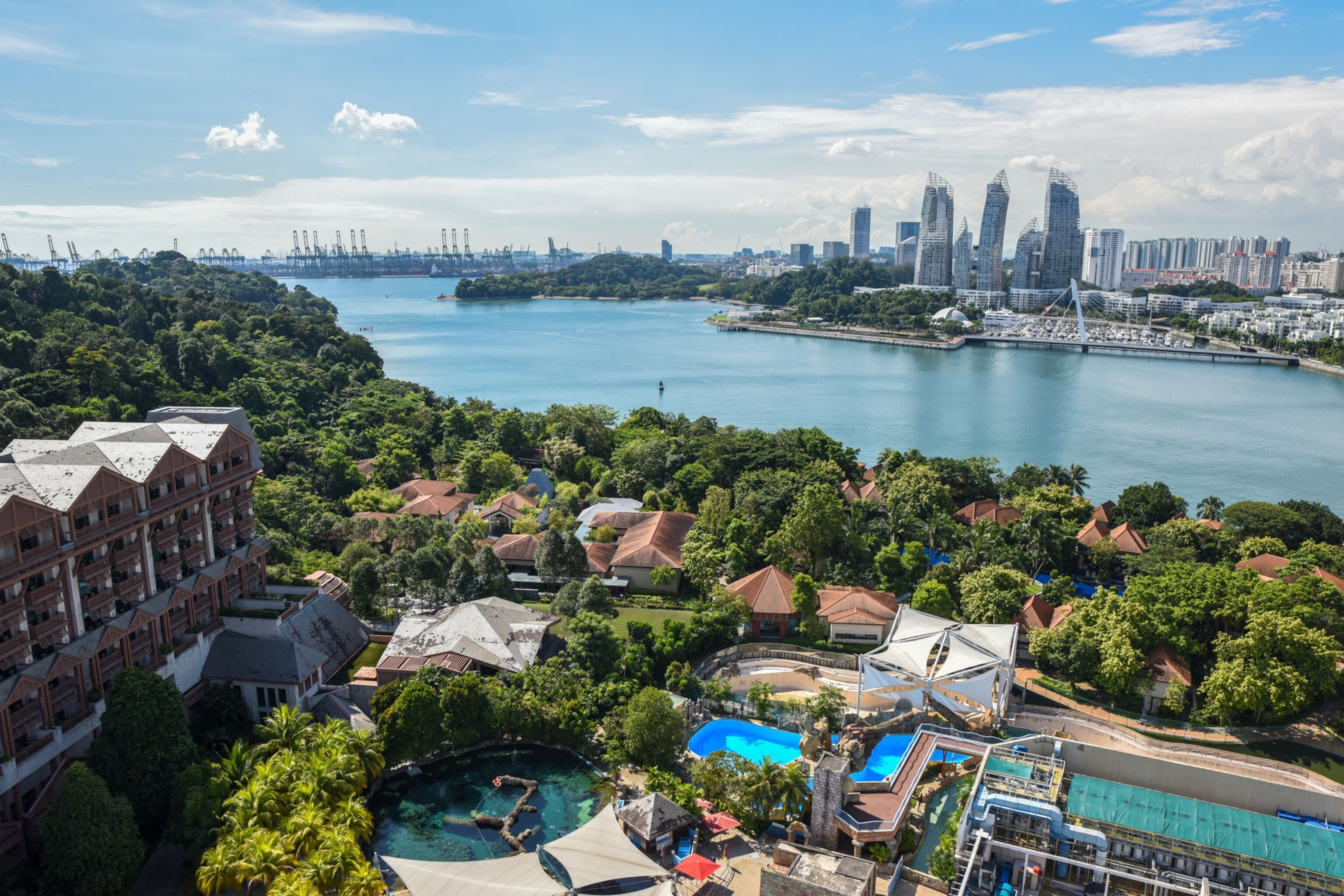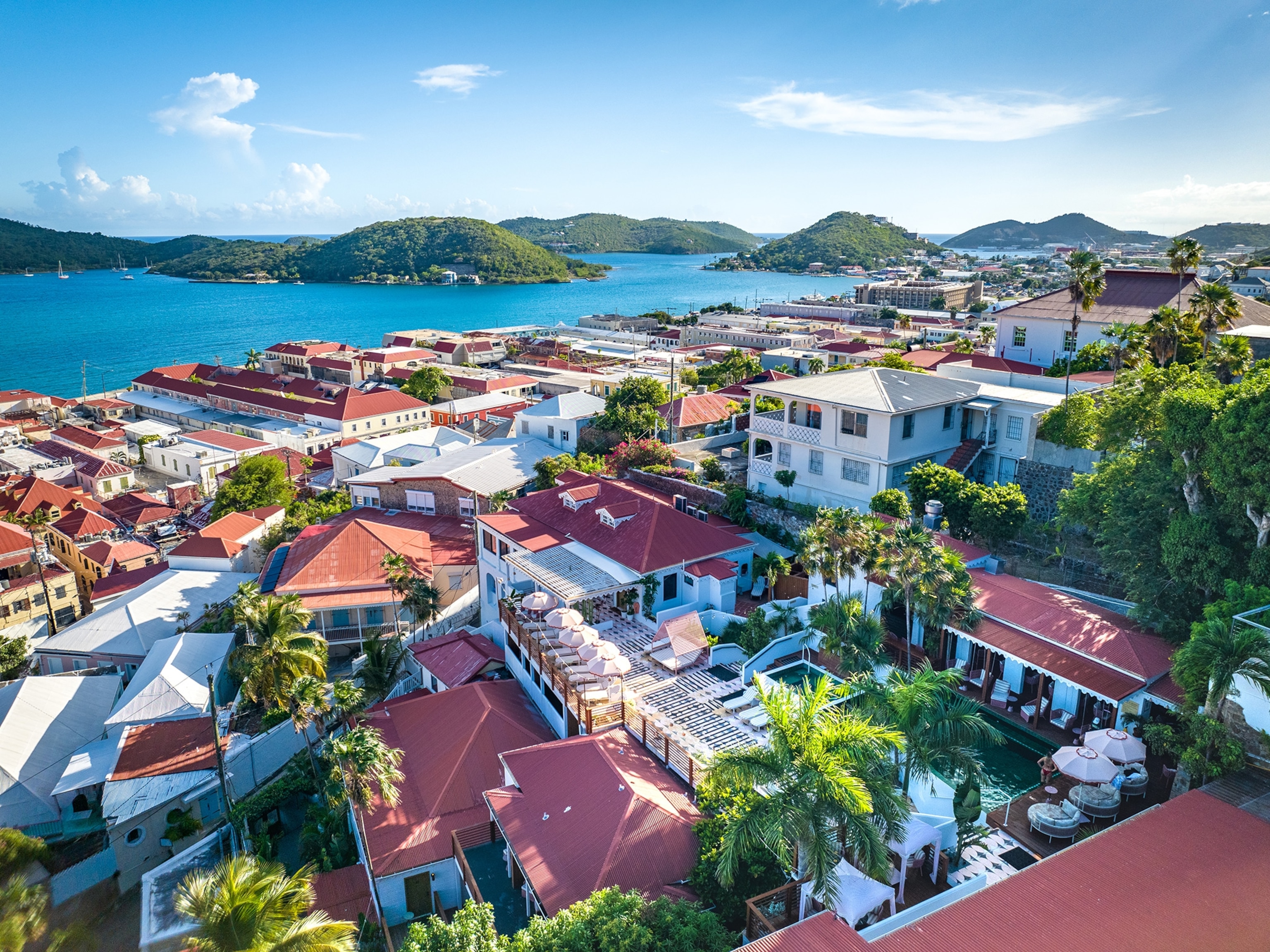
How a brutal POW camp became an idyllic island paradise
In Singapore, a new trail and national monument explore Sentosa Island’s past as a pirate haven and military complex—well before it became a popular family getaway.
Each day tourists ride cable cars over Singapore’s Keppel Harbour to a luxurious holiday isle haunted by death. In the world’s third most densely populated country, Sentosa Island is a popular getaway, thanks to its sandy beaches, majestic rainforest, lavish resorts, and theme parks. (And it was a setting in author Kevin Kwan’s Crazy Rich Asians.) But lurking behind that idyllic veneer are startling tales of torture, plunder, and deadly epidemics.
Sentosa was known for savage pirates and a brutal prisoner of war camp before the Singapore government converted it into an upmarket vacation destination in the 1970s. Now 10 million people a year visit this island, which is less than a mile from the mainland and connected by rail and cable car.
Singapore could have buried Sentosa’s disturbing past beneath its cheerful present. Instead its government recently declared the 19th-century Fort Siloso a national monument and is creating fresh tourism programs that embrace its bleak history.


Pirate haven
Prior to being renamed Sentosa 50 years ago, this 1,200-acre island had an eerie moniker. It was called Pulau Blakang Mati, which means “the island behind which lies death.” That name could be linked to sea nomads who once lived on Singapore’s Brani Island and may have buried their dead on adjacent Sentosa, explains Kwa Chong Guan, adjunct associate professor of history at the National University of Singapore.
Sentosa’s lethal reputation was burnished by pirates and an invisible enemy. In the first half of the 1800s, a mysterious epidemic killed a large percentage of the island’s population, which then included bands of buccaneers. Singapore’s waters brimmed with seafaring criminals long before it was settled by the British in 1819, says Stefan Eklöf Amirell, author of Pirates of Empire.
He says the Singapore Strait, which runs parallel to the nation’s south coast, had always been “excellent for piracy.” This was due to its heavy ship traffic and abundant ambush locations on small, forested islands like Sentosa. Even after the Brits arrived, pirate plunder persisted. “Singapore being a hub of free trade, arms trade, and easy recruitment of crews inadvertently encouraged piracy,” Amirell says of this early colonial period.
(These pirates stole the biggest booty ever.)
Tourists now walk in the footsteps of buccaneers at Fort Siloso. Before it was erected on the northern headland of Sentosa in 1878, this site was popular with pirates, says Goh Geok Yian, associate professor of history at Singapore’s Nanyang Technological University.

To reach the British port at Keppel Harbour, merchant ships had to navigate the narrow strait between that headland and the mainland. “This [location] provided the perfect combination for mounting ambushes against ships,” Goh says.
From fort to POW camp to resort
Siloso was among a cluster of British coastal forts built in the late 1800s to defend Singapore from threats such as the Russian navy, Goh explains. Siloso, the only one intact, now enjoys Singapore’s highest level of heritage protection as a new national monument.
To access this hilltop fort, visitors follow an elevated walkway through a forest canopy. The jungle rustles with macaques; brahminy kites soar above; and Singapore’s skyline unfurls to the east, with serene Siloso Beach to the south.


This natural splendor soon gives way to hulking artillery and grim history. Visitors can inspect the fort’s anti-aircraft structures, command towers, machine gun posts, and sprawling network of bunkers, tunnels, and barracks. A small museum uses videos, photos, and maps to tell Siloso’s story.
(Once a state secret, these Albanian bunkers are now museums.)
The fort was designed to counter seaborne attacks from the south. But it was from the north that Siloso received its fiercest foe. In 1941, the Japanese invaded Singapore overland from Malaysia, and Siloso’s weaponry was shifted accordingly. That had little impact. Singapore fell in 1942 and the Japanese turned this fort into a prisoner of war camp for British and Australian troops.
These dark tales haunt the lantern-lit night tours of Siloso, launched in December. They are also woven into the new Sentosa Heritage Trail, a signposted route past 30 historic sites, including former army offices and hospitals, most of which are explained by interpretive signs. Amid the island’s golf courses and thrill rides, the trail charts Sentosa’s unlikely evolution from pirate port to combat complex to, finally, holiday haven.
What to know
More ways to visit Sentosa aims to be a self-contained destination that caters to all types of tourists. Family-friendly attractions include water parks and aquariums, biking, a theme park, and museums. Adults can go indoor skydiving, bungee jumping, and indulge in high-end restaurants and rooftop bars.
You May Also Like
Go Further
Animals
- How can we protect grizzlies from their biggest threat—trains?How can we protect grizzlies from their biggest threat—trains?
- This ‘saber-toothed’ salmon wasn’t quite what we thoughtThis ‘saber-toothed’ salmon wasn’t quite what we thought
- Why this rhino-zebra friendship makes perfect senseWhy this rhino-zebra friendship makes perfect sense
- When did bioluminescence evolve? It’s older than we thought.When did bioluminescence evolve? It’s older than we thought.
- Soy, skim … spider. Are any of these technically milk?Soy, skim … spider. Are any of these technically milk?
Environment
- Are the Great Lakes the key to solving America’s emissions conundrum?Are the Great Lakes the key to solving America’s emissions conundrum?
- The world’s historic sites face climate change. Can Petra lead the way?The world’s historic sites face climate change. Can Petra lead the way?
- This pristine piece of the Amazon shows nature’s resilienceThis pristine piece of the Amazon shows nature’s resilience
- Listen to 30 years of climate change transformed into haunting musicListen to 30 years of climate change transformed into haunting music
History & Culture
- Meet the original members of the tortured poets departmentMeet the original members of the tortured poets department
- Séances at the White House? Why these first ladies turned to the occultSéances at the White House? Why these first ladies turned to the occult
- Gambling is everywhere now. When is that a problem?Gambling is everywhere now. When is that a problem?
- Beauty is pain—at least it was in 17th-century SpainBeauty is pain—at least it was in 17th-century Spain
Science
- Here's how astronomers found one of the rarest phenomenons in spaceHere's how astronomers found one of the rarest phenomenons in space
- Not an extrovert or introvert? There’s a word for that.Not an extrovert or introvert? There’s a word for that.
- NASA has a plan to clean up space junk—but is going green enough?NASA has a plan to clean up space junk—but is going green enough?
- Soy, skim … spider. Are any of these technically milk?Soy, skim … spider. Are any of these technically milk?
Travel
- Dina Macki on Omani cuisine and Zanzibari flavoursDina Macki on Omani cuisine and Zanzibari flavours
- How to see Mexico's Baja California beyond the beachesHow to see Mexico's Baja California beyond the beaches
- Could Mexico's Chepe Express be the ultimate slow rail adventure?Could Mexico's Chepe Express be the ultimate slow rail adventure?




